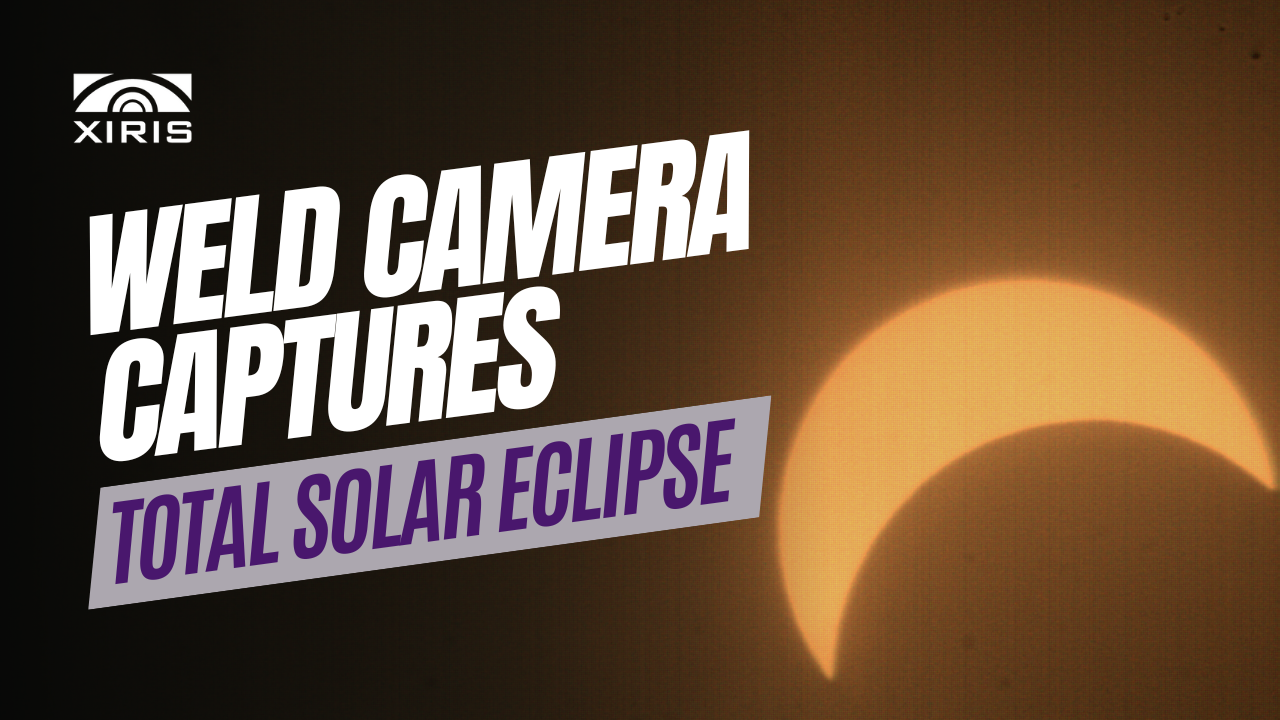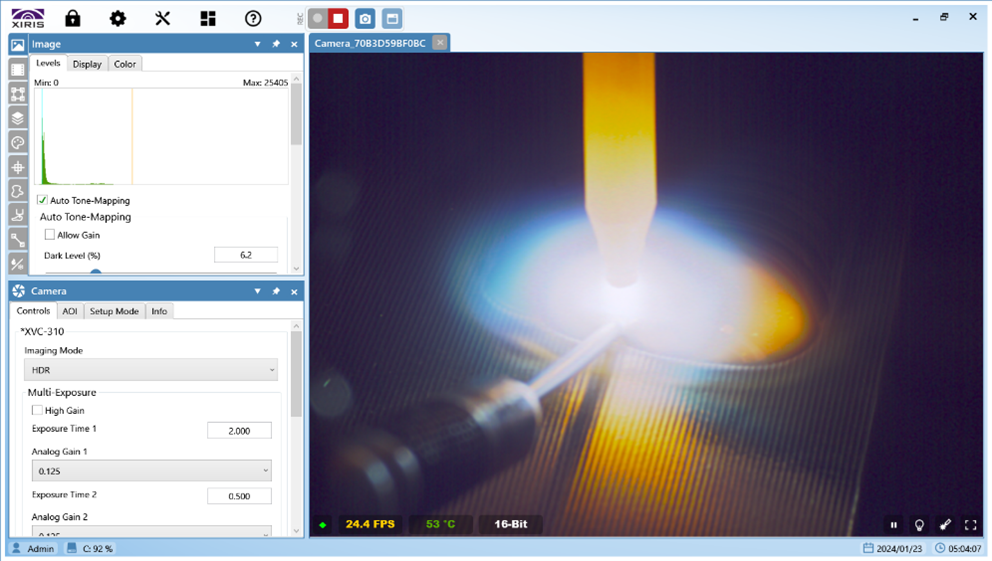Welding is a commonplace activity at a nuclear facility to repair or build various structures, pressure vessels, tanks, boilers and other items. Because of the nature of the environment in a nuclear facility and the levels of radiation present, the weld technician is usually removed from the welding process to an isolated control room that is a reduced radiation area.
.jpg?width=250&height=348&name=nuclear_power_plant_(460x640).jpg) From this control room, a continuous clear view of the welding process is mandatory for the weld technician to be able to monitor and control the welding process. Because of the high quality levels required in a nuclear environment, remote weld monitoring that provides a clear view of the welding process in clear detail is absolutely essential. The level of visibility required can best be achieved with a Weld Camera equipped with High Dynamic Range imaging capability that can see the detail of the extremely bright open arc, as well as its dark surrounding background.
From this control room, a continuous clear view of the welding process is mandatory for the weld technician to be able to monitor and control the welding process. Because of the high quality levels required in a nuclear environment, remote weld monitoring that provides a clear view of the welding process in clear detail is absolutely essential. The level of visibility required can best be achieved with a Weld Camera equipped with High Dynamic Range imaging capability that can see the detail of the extremely bright open arc, as well as its dark surrounding background.
The materials that get welded in nuclear facilities can range from mild to hardened steels, stainless steel, copper, aluminum and some exotic metals. With the welding of such high-cost, specialized materials, tight monitoring and control over all welding parameters is vital. Some metals have unique weld environments (such as highly reflective parent material, excess spatter, variable speed pulsed power) where a Weld Camera equipped with High Dynamic Range imaging is the only way to produce a weld image with enough detail of the entire weld scene to be fully useful to the weld technician.
In the nuclear-facility weld environment—where the stakes are high and each weld pass may have unique weld parameters resulting in changes in the weld pool and arc—High Dynamic Range imaging enables the process and quality control that are imperative.
How Weld Cameras Are Used in Nuclear Facilities
In nuclear facilities, a weaving weld process—using a side-to-side weld torch stroke— is generally used to fill in a fillet weld, especially in the later passes where a wider bead is required to fill the joint.
To monitor the weaving weld process in a nuclear facility, two Weld Cameras are typically used—one camera in front of the weld and one in the rear of the weld.
The view of the weld from the front is used for continuous monitoring of:
- The weld tip position for seam guidance.
- The amount of cut into the sidewall of the parent material.
- The feed wire stick-out.
- The amount of spatter.
- Arc stability (consistency of arc shape).
The view of the weld from the rear allows continuous monitoring of:
- The solidification process of the molten weld material.
- The finished bead, including its surface appearance.
- Porosity of the finished bead.
- Slag/dross.
- Other impurities.
Weave welds are characterized by three things: the stroke length of the side to side motion of the weld torch, the speed of the side to side motion, and the travel speed of the weld torch along the seam.
The front Weld Camera is helpful to the weld technician in determining the stroke length and weave speed, identifying how much weld overlap occurs at a particular travel speed with the goal of obtaining optimum bead configuration. To properly see the weld weave, the field of view of the Weld Camera needs to encompass the full width of the weave as well as the sides of the parent material.
The rear Weld Camera allows an operator to monitor the effect of the weld puddle on the finished weld and verify that the desired weld effect (either smooth or rippled bead) occurs.
Conclusion
Given the critical, high-cost nature of welding in nuclear facilities, an investment in a Weld Camera with High Dynamic Range imaging capability can yield crucial benefits in quality control, productivity, and cost reduction.
Image courtesy of Paul J Everett, Creative Commons.







